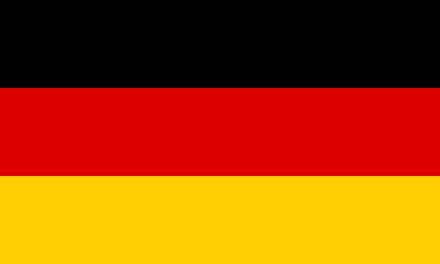Donate to Support Supercluster
Your support makes the Astronaut Database and Launch Tracker possible, and keeps all Supercluster content free.
SUPPORTSupercluster on Patreon
Your support makes the Astronaut Database and Launch Tracker possible, and keeps all Supercluster content free.
SUPPORT








This mission
launches
Fram2
The Mission
Named in honor of the ship that helped explorers first reach Earth’s Arctic and Antarctic regions, Fram2 will be the first polar-orbit human spaceflight mission to explore Earth. It will launch into a 90° circular orbit to the south from Florida, making it the first human spaceflight to fly over Earth’s polar regions from low-Earth orbit.
The North and South Poles are invisible to astronauts on the International Space Station, as well as to all previous human spaceflight missions except for the Apollo lunar missions but only from far away. To date, the highest inclination achieved by human spaceflight has been the Soviet Vostok 6 mission, at 65°. This new flight trajectory will unlock new possibilities for human spaceflight.
Trajectory
The crew plans to observe Earth’s polar regions at an altitude of 425–450 km. At this altitude, Dragon will fly from the North Pole to the South Pole in just 46 minutes and 40 seconds, exactly 30 times faster than the One More Orbit mission did in 2019, when crew member Jannicke Mikkelsen and her team circumnavigated the Earth in a Gulfstream G650ER and set the Guinness World Record.
Throughout the 3-to-5-day mission, the crew plans to observe Earth’s polar wilderness through Dragon’s cupola, leveraging insights from space physicists and citizen scientists to study unusual light emissions resembling auroras.
Research
The crew plans to observe Earth’s polar regions at an altitude of 425–450 km. At this altitude, Dragon will fly from the North Pole to the South Pole in just 46 minutes and 40 seconds, exactly 30 times faster than the One More Orbit mission did in 2019, when crew member Jannicke Mikkelsen and her team circumnavigated the Earth in a Gulfstream G650ER and set the Guinness World Record.
Throughout the 3-to-5-day mission, the crew plans to observe Earth’s polar wilderness through Dragon’s cupola, leveraging insights from space physicists and citizen scientists to study unusual light emissions resembling auroras.
Courtesy of Fram2.
On this
spacecraft
Dragon - Resilience
In keeping with a tradition started by NASA Astronauts Bob Behnken and Doug Hurley on the first crewed Dragon mission, the Crew-1 astronauts who first flew this particular capsule also named it.
The name Resilience was chosen to acknowledge those who are experiencing extraordinary hardships during the COVID-19 pandemic and to those who continue to experience persecution and oppression around the world.
The capsule's first mission lasted 167 days, parking at ISS from November 2020 to May 2021.
Dragon Vehicle Statistics
Total launches: 49
Visits to the ISS: 44
Total reflights: 28
Technical Specifications
Height: 8.1 m / 26.7 ft
Diameter: 4 m / 13 ft
Capsule volume: 9.3 m³ / 328 ft³
Trunk volume: 37 m³ / 1300 ft³
Launch Payload Mass: 6,000 kg / 13,228 lbs
Return Payload Mass: 3,000 kg / 6,614 lbs
The Crew Dragon spacecraft has carried 53 humans into orbit since May 2020
Dragon for crew
This SpaceX capsule is designed to carry a crew of four to the International Space Station or other Earth orbit destinations after being launched atop a reusable Falcon 9 rocket.
The capsule includes a launch abort system, an advanced environmental control and life support system that keeps the crew safe during flight, and state-of-the-art touchscreen interfaces.
Crew Dragon is designed to operate autonomously but can be manually controlled by SpaceX teams in Hawthorne, California, and the astronauts on board.
Under the contracted crew rotation missions to the Space Station for NASA, Dragon will carry a regular crew of 4 international astronauts.
Crew Dragon is also available for private missions to Earth orbit for paying customers.
For missions to the Station, Crew Dragon can remain in orbit for up to 6 months.
Photo credit: SpaceX
Atop this
rocket
Falcon 9 with Dragon (Crew)
Falcon 9 is a reusable, two-stage rocket designed and manufactured by SpaceX for the reliable and safe transport of people and payloads into Earth orbit and beyond.
Falcon 9 is the world’s first orbital-class reusable rocket.
Stats
Total launches: 428
Total landings: 383
Total reflights: 357
The Falcon 9 has launched 52 humans into orbit since May 2020
Specs
Height: 70 m / 229.6 ft
Diameter: 3.7 m / 12 ft
Mass: 549,054 kg / 1,207,920 lb
Payload to Low Earth Orbit (LEO): 22,800 kg / 50,265 lb
Payload to Geostationary Transfer Orbit (GTO): 8,300 kg / 18,300 lb
Payload to Mars: 4,020 kg / 8,860 lb
On January 24, 2021, Falcon 9 launched the first ride-share mission to Sun Synchronous Orbit. It was delivering a record-setting 143 satellites to space. And while this was an important mission for SpaceX in itself, it was also the moment Falcon 9 overtook United Launch Alliance’s Atlas V for the total number of consecutive successful launches.
SpaceX’s Falcon 9 had become America’s workhorse rocket, launching 31 times in 2021. It has already beaten that record this year, launching almost an average of once a week. While most of the launches deliver Starlink satellites to orbit, the company is still launching the most commercial payloads to orbit, too.
Falcon 9 is a medium-lift launch vehicle, with the capability to launch over 22.8 metric tonnes to low earth orbit. Unlike any other rocket, its first stage lands back on Earth after separating from its second stage. In part, this allows SpaceX to offer the cheapest option for most customers with payloads that need to reach orbit.
Under its ride-share program, a kilogram can be placed in a sun-synchronous orbit for a mere 1.1 million dollars, far cheaper than all other currently operating small satellite launch vehicles.
The reusability and fast booster turnaround times have made Falcon 9 the preferred choice for private companies and government agencies. This has allowed SpaceX to capture a huge portion of the launch market.
Protecting the Crew
On the launch pad, the crew will board Dragon prior to fueling of the rocket.
Dragon's abort system will be armed and ready to pull the crew away from Falcon 9 in the event a critical issue develops during fueling.
The launch to a 200 x 200 km orbit will take just under 9 minutes.
Dragon and its crew will then separate from the Falcon 9 second stage 11 minutes after liftoff from the Kennedy Space Center.
Photo courtesy of Erik Kuna for Supercluster.
From this
launch site
LC-39A - Kennedy Space Center, Florida
Launch Complex 39A (LC-39A) is a historic launch site located at NASA's Kennedy Space Center in Florida. Originally constructed in the late 1960s, LC-39A was designed to support the Apollo program, including the groundbreaking Apollo 11 mission that first landed humans on the Moon in 1969. The pad also played a crucial role in launching Skylab missions and was instrumental during the Space Shuttle era, including the launch of the first Space Shuttle, Columbia, on STS-1 in 1981.
In 2014, SpaceX leased LC-39A from NASA and undertook extensive refurbishments to adapt the pad for its Falcon 9 and Falcon Heavy rockets. These upgrades involved significant modifications to the pad's infrastructure to meet the requirements of SpaceX’s rockets. Since then, LC-39A has become a vital launch site for SpaceX, supporting a range of missions including crewed flights under NASA's Commercial Crew Program.
Under SpaceX's management, LC-39A has been the site of several landmark events. It hosted the first Falcon 9 launch from the pad on March 30, 2017, and was the launch site for the historic Falcon Heavy debut on February 6, 2018, which was the most powerful rocket in operation at that time. Additionally, LC-39A was the launch site for the first crewed flight of the Crew Dragon spacecraft on May 30, 2020, marking the first crewed spaceflight from U.S. soil since the end of the Shuttle program.
Today, LC-39A remains a critical asset for SpaceX, supporting both crewed and uncrewed missions. It continues to serve as a launch site for Falcon 9 and Falcon Heavy rockets and is expected to play a central role in future missions, including those aimed at lunar exploration and beyond. The pad's rich history and ongoing significance highlight its importance in the broader context of space exploration.
Photo courtesy of Erik Kuna for Supercluster
Booster will
land here
Landing Zone 1 (LZ-1)
LZ-1
Landing Zone 1 (LZ-1) is an 86 meter wide circular landing pad at the Cape Canaveral Space Force Station and is one of two SpaceX booster landing pads at the Florida spaceport.
Built on former Launch Complex 13, LZ-1 was the site of SpaceX's first successful landing and recovery of a Falcon 9 on the ORBCOMM-2 mission in December 2015. Since then, it has hosted 16 landings.
The landing pad, as well as its twin, LZ-2 located a few dozen meters away, can support both single landings of a Falcon 9 or simultaneous landings of the two Falcon Heavy side boosters.
Photo: Jenny Hautmann for Supercluster
Here's where to view Fram2
Viewing Sites
- Alan Shepard Park
- A. Max Brewer Parkway Bridge
- Saturn V Building / Banana Creek
- Cherie Down Park
- Cocoa Beach Pier
- Jetty Park
- Kennedy Space Center Visitor Complex
- Lori Wilson Park
- Playalinda Beach
- Rotary Riverfront Park
- Sand Point Park
- Sidney Fischer Park
- Space View Park
GET THE SUPERCLUSTER APP
THE SUPERCLUSTER PODCAST
A podcast exploring the amazing milestones that changed space history, the wildest ideas that drive our future, and every development in this new Golden Age of Space.
Donate to support
Your support makes the Astronaut Database and Launch Tracker possible, and keeps all Supercluster content free.
SupportCOPYRIGHT 2021 SUPERCLUSTER LLC





